You searched for: www.highwincasino.com/recommandation-and-reviews-of-fc-slot-free-play-and-demo/
<< Previous | Displaying results 326-350 of 480 for "www.highwincasino.com/recommandation-and-reviews-of-fc-slot-free-play-and-demo/" | Next >>
-
Article 48
ArticleArticle 48 allowed the German president to declare a state of emergency in times of national danger and effectively to rule as a dictator for short periods. Learn about its far-reaching effects.
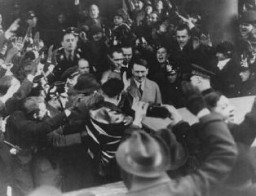
-
Jacob Wiener
ArticleExplore Jacob Wiener’s biography and learn about his experiences during Kristallnacht in Würzburg, Germany.

-
US Forces Liberate Flossenbürg
Timeline EventApril 23, 1945. On this date, US forces liberated the Flossenbürg camp in Germany.
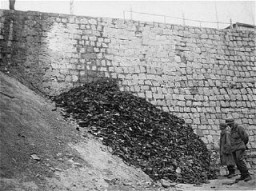
-
D-Day
Timeline EventJune 6, 1944. On this date, US, British, and Canadian troops land on the beaches of Normandy, France.
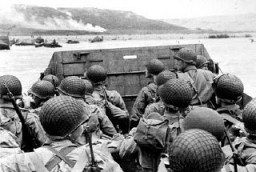
-
Martha and Waitstill Sharp
ArticleMartha and Waitstill Sharp, American Unitarian aide workers, helped thousands of Jews, intellectuals, and children in Prague, Lisbon, and southern France in 1939–1940.
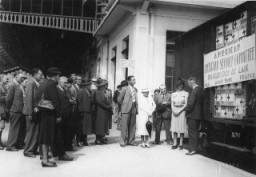
-
The History of the Swastika
ArticleThe swastika is an ancient symbol that was in use in many different cultures for many years before Adolf Hitler made it the centerpiece of the Nazi flag.

-
Alfred Dreyfus and the "Dreyfus Affair"
ArticleJewish military officer Alfred Dreyfus was wrongfully convicted of treason against France in 1894. The trial and ensuing events are known as the “Dreyfus Affair.” Learn more.
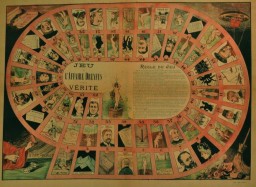
-
Invasion of Poland, Fall 1939
ArticleThe German invasion of Poland in the fall of 1939 triggered WWII. Learn more about key dates and events, causes, and related Holocaust history.
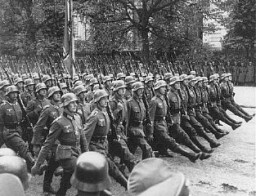
-
World War I: Treaties and Reparations
ArticleAfter the devastation of WWI, the victorious western powers imposed a series of treaties upon the defeated nations. Learn about the treaties and their impact.

-
Quakers
ArticleThe American Friends Service Committee, a Quaker relief organization, helped thousands of people before, during, and after World War II. Learn about its refugee aid work.

-
Life After the Holocaust: Thomas Buergenthal
ArticleAfter WWII and the fall of the Nazi regime, Holocaust survivors faced the daunting task of rebuilding their lives. Listen to Thomas Buergenthal's story.

-
Life After the Holocaust: Aron and Lisa Derman
ArticleAfter WWII and the fall of the Nazi regime, Holocaust survivors faced the daunting task of rebuilding their lives. Listen to Aron and Lisa Derman's story.
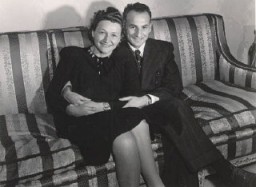
-
Concentration Camp System: In Depth
ArticleThe Nazi regime's extensive camp system included concentration camps, forced-labor camps, prisoner-of-war camps, transit camps, and killing centers.
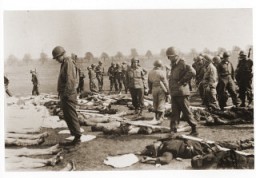
-
Heinrich Himmler
ArticleSS Chief Heinrich Himmler was chief architect of the "Final Solution." Learn more about Himmler, one of the most powerful men after Hitler in Nazi Germany.

-
What conditions, ideologies, and ideas made the Holocaust possible?
Discussion QuestionThe leaders of Nazi Germany, a modern, educated society, aimed to destroy millions of men, women, and children because of their Jewish identity. Understanding this process may help us to better understand the condit...

-
Danuta Justyna
ID CardDanuta was born to Roman Catholic parents in the small industrial town of Piotrkow Trybunalski in central Poland. Her father and mother were school teachers. She and her younger sister, Maria, became friends with two Jewish girls, Sabina and Helena Szwarc. Although their houses were more than a mile apart, the girls often played together. 1933-39: Danuta was planning on attending college in September 1939, but on September 1 Germany invaded Poland. Four days later, German soldiers streamed into Danuta's…
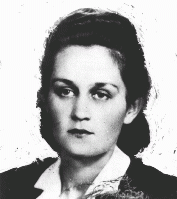
-
Maria Justyna
ID CardMaria was born to Roman Catholic parents in the industrial town of Piotrkow Trybunalski in central Poland. Her father and mother were school teachers. Maria attended grade school and secondary school in Piotrkow. She and her older sister, Danuta, became friends with two Jewish girls, Sabina and Helena Szwarc. Although their houses were more than a mile apart, the girls often played together. 1933-39: The Germans invaded Poland on September 1, 1939, and occupied Piotrkow four days later. Most schooling for…
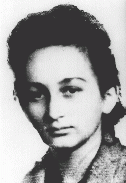
-
David Bayer
ID CardDavid was the second of four children born to religious Jewish parents in Kozienice, a town in southeastern Poland. His father, Manes, owned a shoe factory that supplied stores throughout the country. His mother, Sarah, took care of the home and children, and helped in the factory. Kozienice had a thriving Jewish community that constituted over half of the town's population. 1933–39: For most of the 1930s, David spent his days going to school, playing sports, and working in his father's shoe factory.…

-
Gisella Renate Berg
ID CardGisella lived with her parents, grandparents, uncle, and older sister, Inge, in Lechenich, a small village outside of Cologne. The Bergs were an observant Jewish family. Gisella's grandfather was the president of the local synagogue association and her uncle was the cantor. Her father, Josef was a respected cattle dealer, who had many business and personal contacts with their Jewish and non-Jewish neighbors. 1933–39: Gisella was born several months after the Nazis came to power. Her parents feared for…
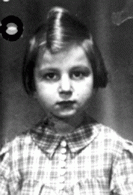
-
Kurt Pauly
ID CardKurt was born to Jewish parents in the city of Aachen, where his mother's family had resided since the 18th century. His father, though trained as a chef, worked as a butcher and also managed several stores for his father-in-law. The Paulys lived over one of those shops in the nearby suburb of Eilendorf. Kurt enjoyed large family gatherings, where he would play with his cousins, Anne and Margot Frank. 1933–39: When the Nazis came to power in 1933, the situation drastically changed for the Paulys.…

-
Susan Strauss
ID CardSusan grew up in Vacha, a small Thuringian town where her family had lived for more than 400 years. Her father, Herman, owned a general store and her mother, Bertha, took care of the home and children. Susan had a younger sister Brunhilde. The Strausses were one of about 25–30 Jewish families living in Vacha. 1933–39: Soon after the Nazis took power, many of Susan's friends stopped playing with her. In 1938 she was forced to leave the public school. That November, the Nazis unleashed a wave of pogroms…
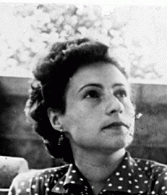
-
Barbara Marton
ID CardThe Martons were one of 35 Jewish families in the small northern Transylvanian town of Beliu. Barbara's father owned a grocery, and her mother helped out in the store. The Martons lived in a comfortable home with a flower garden, and enjoyed friendly relations with the townspeople. As a child, Barbara learned Hebrew on Sunday mornings at the home of Beliu's rabbi. 1933-39: Barbara's father's business began to fall off when another grocery opened nearby in Beliu. By 1937 business was so bad that they sold…
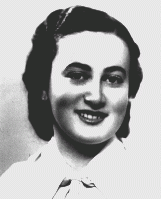
-
Emanuel (Manny) Mandel
ID CardManny was born to a religious Jewish family in the port city of Riga, Latvia. Shortly after Manny's birth, his father accepted a post as one of the four chief cantors in Budapest and the family returned to Hungary, where they had lived before 1933. Manny's father was based at the renowned Rombach Street synagogue. Between the wars, Budapest was an important Jewish center in Europe. 1933-39: Manny's father wouldn't let him have a bicycle. He thought someone might take it away from him because he was…

-
Urszula Kaczmarek
ID CardUrszula was one of four children born to Franciszek and Jadwiga Kaczmarek, who lived in the industrial city of Poznan in western Poland. The family lived at 11 Smolnej Street. Like their parents, the Kaczmarek children were baptized in the Roman Catholic faith. 1933-39: As one of the older children in the family, Urszula helped her mother with the housework. She was 10 years old when the Germans invaded Poland on Friday, September 1, 1939. German planes bombed Poznan that same day, and German troops…
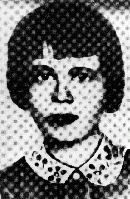
-
Maurits Wijnberg
ID CardMaurits was one of four children born to religious Jewish parents living in the town of Leek. When he was 12, the Wijnbergs moved to the town of Zwolle, where they ran a kosher hotel. That same year, Maurits became ill with meningitis. After he recovered, he worked hard to compensate for missed school and became an exceptional student. 1933-39: Along with his younger sister, Maurits was active in the local Zionist organization. One of the group's activities was raising money for Palestine [Yishuv]. Every…

